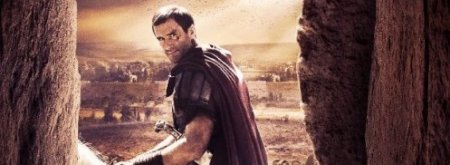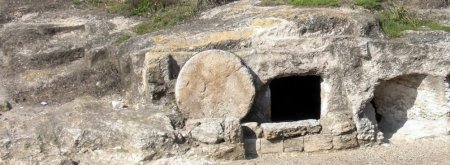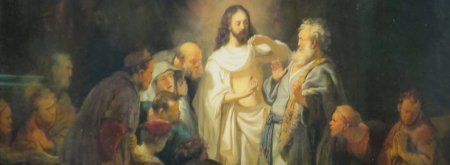The Resurrection Factor
The resurrection of Jesus Christ. If Christ be not raised from the dead then our faith is in vain. We ended our last session by looking at the security taken around the tomb of Jesus Christ. Then the situation after the resurrection when the guard fled, the seal was broken, the stone was rolled up an incline away, from not just from the entrance, but the entire tomb.
I ended the last session by pointing out some of the situations – that the tomb was empty, that it is an historical fact that the tomb was empty. That is not the issue. The issue is how did the tomb become empty? Dr Paul Maier is a professor of ancient history at Western Michigan University, in my country, in the state of Michigan. Dr Maier, an ancient historian, makes an observation about the significance of Christianity being launched in the city of Jerusalem. This is what he wrote, 'Where did Christianity first begin – only one spot on earth, the city of Jerusalem. But this is the very last place it would have started if Jesus' tomb had remained occupied, since anyone producing a dead Jesus would have driven a wooden stake through the heart of an incipient, or beginning, Christianity inflamed by a supposed resurrection'.
What happened in Jerusalem seven weeks after the first Easter could have taken place only if Jesus' body were somehow missing from Joseph's tomb. Otherwise, the temple establishment in its imbroglio with the apostles would simply have aborted the movement by making a brief trip over to the sepulcher of the tomb of Joseph of Arimathea and unveiling Exhibit A: an empty tomb. They did not do this because they knew the tomb was empty. Their official explanation, that the disciples had stolen the body, was an admission that the sepulcher was indeed empty. The tomb was empty.
I want to read a portion of scripture from Acts 5:34–42. Here again, this historical account confirms that the tomb had to be empty. The Word of God, starting in verse 33 of Acts 5 says, 'But when they had heard this they were cut to the quick and were intending to slay them. But a certain Pharisee named Gamaliel, a teacher of the law respected by all the people, stood up in the council and gave orders to put the men outside for a short time.' Peter and some others were preaching that Christ was alive. They arrested them and brought them in to the head of the Jewish council. And that is when they started talking, “What should we do with these men?”
And then in verse 35 it says, 'But Gamaliel said to them, "Men of Israel, take care what you propose to do with these men. For some time ago Theudas rose up, claiming to be somebody and a group of about four hundred men joined up with him. He was slaying and all who followed him were dispersed and came to nothing. After this man, Judas of Galilee rose up in the days of the census and drew away some people after him. He too perished and all those who followed him were scattered. In the present case [referring to Jesus], I say to you, stay away from these men and let them alone, for if this plan or action should be of men it will be overthrown, but if it is of God, you will not be able to overthrow them or else you may even be found fighting against God." And they took his advice.' This Jewish council listened to Gamaliel and took his advice. 'And after calling the apostles in, they flogged them and ordered them to speak no more in the name of Jesus and then released them. And so they went on their way from the presence of the council and rejoiced in that they had been considered worthy to suffer shame for His name. And every day in the temple and from house to house, they kept right on teaching and preaching Jesus as the Christ.'
The point I want to make there is this: this whole historical statement would be ridiculous if the body of Christ was still in the tomb. Come on! All the Jewish council had to do was take the apostles, walk them over to the tomb and say, “Look! There is the body of Jesus.” It was crazy to think that they would have flogged them and beat them and told them to quit saying and preaching that Christ had been raised from the dead, that He is the Messiah, if the body was still there. The historical setting of the New Testament and what happened in Jerusalem confirms that the tomb was empty.
What are some of the theories that go along with trying to explain away the resurrection? I want to lay out some of these theories for you. I want to context it this way: What convinced even the apostles and the early believers, that Christ had been raised from the dead? Not the empty tomb. Do you hear me? The empty tomb did not convince them that Christ had been raised from the dead. Even when the women ran back, Mary and the others, to tell the disciples that Christ's body had been moved, they didn't say He was resurrected. They said, “They have taken His body”. The empty tomb did not convince anyone of the resurrection. You see, there were many natural explanations of how the body of Christ could have disappeared that people presented and to me, there are two explanations to the tomb being empty. Either it was natural means or supernatural. And you know what I found? When I exhausted all the natural means, none of them seemed to be true. Then the logical conclusion is – it had to be supernatural, which fit all the facts of the case.
What really convinced the followers of Christ of the resurrection was not the empty tomb, but rather His appearances. You say, “What?” That's right – His appearances and walking with them like Luke wrote in Acts, that for forty days after the resurrection, the disciples, the apostles, His followers lived with him, ate with Him for forty days and it says, with many convincing proofs. It was the resurrection appearances that convinced them that Christ was raised from the dead and that it was by supernatural means.
Paul points out, and this was written within thirty years of the time of Christ, Paul said, 'Look. Jesus appeared to over five hundred people at one time' and he said many of them are still alive today who can confirm it. Now let me tell you, if Christ had not appeared to those five hundred people, any critic in the audience could immediately have silenced Paul by saying show me just one of those five hundred people that saw Him at one time after His death and burial when you claim that He was resurrected.
Now look at this in a court of law. Eyewitness testimony is pretty powerful. So take five hundred people who saw Christ, multiply that and give each one of them six minutes in a court of law to testify. That would be three thousand minutes. Now take the three thousand minutes and divide by sixty minutes an hour. You would get fifty hours of eyewitness testimony from just one appearance of Christ. Paul said, “Look. The majority of them are alive right now. Go ask them". It was the appearances that convinced people of the resurrection of Christ.
When you study any alleged theory to explain away what happened to the body of Christ, there are several things you have to keep in mind. I believe there are two prerequisites that must fit any explanation of the disappearing of the body of Christ. The first is this: it must fit all the facts, with all the evidence that has been discovered historically. Any theory must take into account all the evidence. One of the reasons I say that is because we want to prove something so we can believe it. We will often take just one or two pieces of reality, one or two pieces of the evidence, ignore all the rest and then build our case. You cannot do that with the resurrection. Whatever theory you come up with, it must take into account all the facts, all the evidence.
Second, we have got to be very careful that we do not approach the evidence with a preconceived assumption of what happened. This is why I am so glad that I set out to refute the resurrection. As I examined the evidence, I had the preconceived assumption that there is no way that anyone could be raised from the dead. It did not fit into my view of reality, but as I started to look at the evidence all of a sudden I realized, hey, if I am really honest with myself I have got to set aside my assumption that it is impossible for anyone to be raised from the dead and let the evidence speak for itself. When I did that, I had a total switch in my assumption about Jesus Christ and came to believe that the tomb was empty and He was raised from the dead on the third day. As we look at several theories remember it must fit all the facts, the whole story, and it must not be the facts being determined by a pre-assumed assumption of what you thought took place or you think might have taken place.
One of the first theories is that the women went to the wrong tomb. This is presented by many people saying they went to the wrong tomb. In other words, they were a little emotional and everything and a little excited and without realizing it, they ran to the wrong tomb. Now that sounds good unless you want to think.
First of all, it was a private burial area. It was not some big public burial area. It was a private burial area. The women, the Bible says, sat there and they watched the body of Christ being prepared and buried and the stone moved against the entrance of the tomb. They had been there personally to the tomb.
Second, if they went to the wrong tomb, now follow this through with me – if they went to the wrong tomb, then the men went to the wrong tomb. If the men went to the wrong tomb, then the Romans went to the wrong tomb. If the Romans went to the wrong tomb, then the Jews went to the wrong tomb. And if the Jews went to the wrong tomb then the Sanhedrin, the Jewish council, went to the wrong tomb. And if the Jewish council went to the wrong tomb then I guess you would have to say the angel went to the wrong tomb. Men and women, any common sense, any even slight investigation of the evidence, would show that the women could not have gone to the wrong tomb. Because then they would not have beaten the apostles and said, “Quit saying this about Jesus being raised from the dead.” They would have just taken them over to the right tomb and exposed the body of Christ. If the women went to the wrong tomb, there is no way that Christianity could have been launched from the very city of Jerusalem where a fifteen minute walk would expose its fallacy. There is no way.
Then another theory to explain away the empty tomb is that it was an unknown tomb. A professor by the name of Gignabert, presented this theory in the universities. What he says is that the truth is we do not really know what tomb Jesus was placed in. It was an unknown tomb and they probably did not know where the body of Christ had been placed. In fact, he goes on to say that probably the body of Christ was just thrown in to a massive public burial area and everybody had forgotten about it. This is something I concluded, even before I became a Christian. That many of the explanations that the critics have tried to explain away the resurrection speaks louder for the fact of the resurrection than all the evidence given by the apostles. Or I would put it this way, the shallowness of the critic speaks louder than the voice of the believer. I am convinced with every theory I have ever heard of to explain away the empty tomb it would take more faith to believe it than to believe the resurrection.
First of all, the unknown tomb theory has absolutely no evidence for it. Second, every account shows that it was not a public burial area, it was a private burial area. Not only were the women and the Jews familiar with the burial of Christ, but so were the Romans and the Jewish leaders were all aware of the burial situation of Christ. And as soon as they started to proclaim Christ was raised from the dead, the Jewish authorities and the Roman authorities would have risen up and immediately provided the body of Christ. It would have silenced it all. And then it does not fit the facts.
To this day, I have never had one single theory, and I have read them all, I have had every one of them presented to me in debates or personal conversation, there has never been one single theory to explain away the empty tomb that fits all the facts. They always have to move things around and eliminate certain facts and there is no reason to eliminate one fact over against another fact.
Another theory is that Christ really didn't die. He was crucified, but He really didn't die. He passed out, lost a lot of blood, was placed into a damp tomb, a very moisture cooled tomb, and they rolled the stone against the entrance, sealed it and went away. An amazing thing, this theory will say the damp tomb, instead of killing Him, healed Him. I guess what we would have to say, He jumped up, He hopped over to the stone, pushed the stone out of the way, tied the guard unit up with His linen cloth, appeared to His disciples as Lord of Life and was never ministered unto, but ministered unto others.
One great scholar, C.S. Lewis, at Oxford and later at Cambridge University, the two universities he taught at, concluded anyone who would believe that Christ just passed out and was resuscitated would be somebody on the level who would call himself a poached egg. That Christ did not really die, He just passed out and was buried and then was resuscitated does not even come close to taking in to consideration all the facts. For example, the spear going into the side; four executioners signing His death warrant; a hundred and something pound encasement around the body. I guess if it was true then He had a snorkel that came up out of the grave clothes so He could breathe. He was placed in a tomb with a one and half to two ton stone rolled against the entrance, and a twenty seven man temple police or a sixteen man Roman security unit was placed there and there was a seal on the stone.
That He just got up, rolled the stone away, fought off the guard and left and appeared as the Lord of Creation is an impossibility. It would take more faith to believe that than the faith it takes to believe the God acted in history and raised His Son from the dead. On the third day Christ was raised from the dead. Now you say, “Wait a minute. I do not believe Christ was raised from the dead. I think the body is still in the tomb and what they had were hallucinations.” As I travel all over the world, I will have professors and students say to me that all the appearances of Christ to so many people at different times were merely hallucinations.
I want to first of all point out the different appearances that Christ made after the resurrection because this is critical in understanding hallucinations. For example, He appeared to Mary Magdalene; then He appeared to the women returning from the tomb; then He appeared to Peter later in the day. He appeared to the disciples of Emmaus; He appeared to the apostles without Thomas, then He appeared to the apostles with Thomas. And then He appeared to seven of them by the Lake of Tiberias; then He appeared to five hundred people at one time and then it says He appeared unto James, His brother. He appeared unto eleven of them; then He appeared to them at the ascension; and then it says twice He appeared to the apostle Paul. Now these were all various appearances of Christ after the resurrection.
Now with hallucinations, the American Psychiatric Association in my country defines hallucinations this way: 'A false sensory perception in the absence of an actual external stimulus'. In other words, it's a false emotional personal perception of something out there where there is absolutely no external reference for whatever they perceived.
And then Dr. J.P. Brady, from the Department of Psychiatrics at the University Of Pennsylvania School of Medicine, defines hallucinations this way: 'The perception of objects or patterns of light which are not objectively present'. In other words, it is a subjective perception of what appears to be an objective reality. Now you say, “What does all this mean?” Hang on to it. I will come back and explain them.
Some of the rules of hallucinations are: they only occur with people with certain type of emotional and mental make-up. Second, no two people have the same hallucination. You say, “What?” That's right. No two people have the exact same hallucination. Why? Because there is no external objective reference point. It is all internal and subjective. As a result, every subjective manifestation of appearance has to be different with each individual. This is why people who are informed about hallucinations would just laugh at the accusation that all of Christ's appearances were hallucinations.
Now Christ appeared in every imaginable situation – walking down the road; in the room; outdoors; on a hillside; and you had every type of situation where it would be impossible for two people to have the same hallucination. And then look at this: the experts say that when it comes to hallucination, no two people can have the same hallucination because there is no objective external reference point to trigger the internal subjective perception. Now if that is true, and I have no reason to believe it is not, then if five hundred people that Christ appeared to all had the exact hallucination, men and women, you would have five hundred miracles equal to the resurrection.
No one who takes time to examine the evidence would ever conclude that they were hallucinations. And besides, if they were hallucinations then the body of Jesus would still be in the tomb. And if the body of Jesus was still in the tomb then a fifteen to thirty minute walk by anyone in Jerusalem would instantly refute all the preaching of the apostles. They would not have taken the apostles and beat them to force them to quit saying that Christ had been raised from the dead and threatened to kill them. All they had to do was walk and produce the body of Christ. In fact, if they were hallucinations, then all you would have had to do, and the Jewish leaders were not dumb, is take the body of Christ, put it on a cart and pull it through Jerusalem and you would have destroyed Christianity in the grave. It is an historical statement and on the third day He was raised from the dead.
Go to Part 5
© 2009 Josh McDowell Ministry
Josh McDowell Ministry, 2001 West Plano Parkway, Suite 2400, Plano, TX 75075, USA
Tel: +1 972 907 1000 www.josh.org
This resource is reproduced here by the kind permission of the Josh McDowell Ministry.



